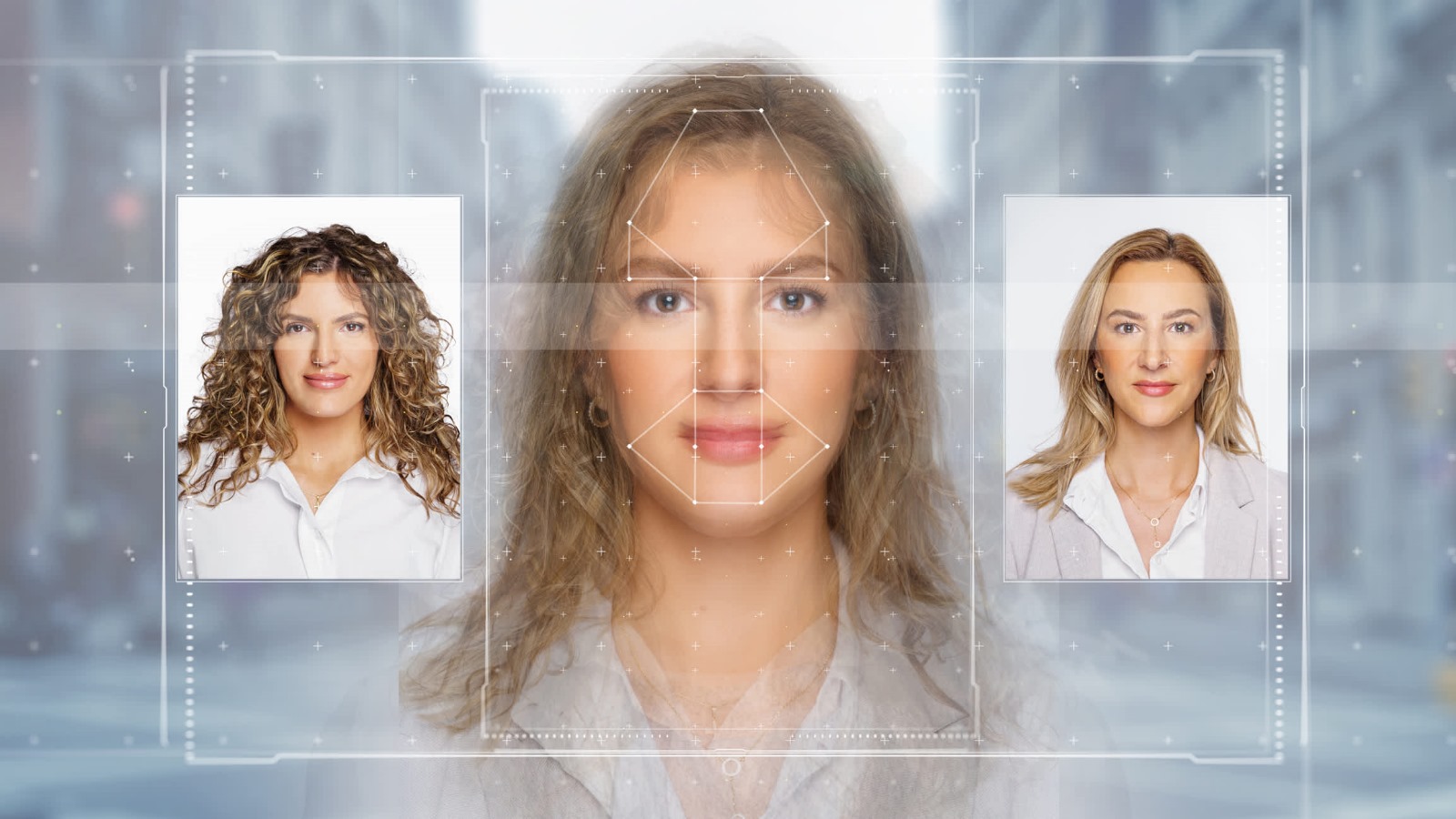In today’s digital landscape, the word deepfake detection is becoming more common. Deepfakes are hyper-realistic digital manipulations of audio, images, or videos that frequently employ artificial intelligence (AI) algorithms.
These alterations can flawlessly superimpose one person’s visage onto another, change speech patterns, or even generate manufactured information that appears and sounds real. So, why are deepfakes such a concern?
Imagine someone convincingly impersonating you in a video, saying or doing things you never did. This goes beyond internet pranks and poses severe threats to identity verification.
In a world where we spend so much of our time online, from banking to networking, accurately verifying our identities is critical.
Consider this: if someone can construct a convincing video of you confessing to a crime, acquiring unauthorized access to your accounts becomes simple.
Identity theft, fraud, and even blackmail are all feasible solutions in the hands of expert deepfake developers.
Moreover, in professions where trust is essential, such as law enforcement or journalism, the possibility of misinformation and manipulation is concerning.
In the digital age, securing our identities has never been more important. It’s no longer just about protecting personal information; it’s about maintaining our integrity and reputation in an increasingly interconnected world.
The rise of deepfakes highlights the need for strong identity verification systems that can distinguish between authentic and falsified information.
As technology advances, so should our defenses against its misuse. Combating the hazards posed by deepfakes, whether through improved AI detection algorithms, tougher verification standards, or enhanced public awareness, will require a collaborative effort from all stakeholders.
After all, in a world where seeing isn’t always believing, protecting our identities becomes critical to navigating the digital terrain safely and securely.
How deepfake works?
Deepfakes use deep learning methods, namely generative adversarial networks (GANs). GANs are composed of two neural networks: a generator and a discriminator.
There generator generates phony content, such as a modified video, while the discriminator attempts to discern between actual and fake content.
The generator improves its ability to create convincing deepfakes through continual iteration and refining, while the discriminator improves its ability to recognize them.
Deepfakes may also use techniques such as face landmark detection, image warping, and voice synthesis to increase their realism.
Types of deepfakes:
- Facial manipulation.
- Voice manipulation.
- Video manipulation.
- Image manipulation.
What is deepfake detection?
Deepfake detection uses AI algorithms and other techniques to identify altered material. This technique frequently involves examining discrepancies in facial expressions, audio quality, and odd motions within the content.
Metadata analysis and reverse image searches can also help determine the media’s validity. Despite continual progress, deepfake detection remains a difficult issue due to the rapid evolution of deepfake technology.
What are deepfake detection methods?
Deepfake detection methods use a variety of ways to identify faked content. These methods include the following:
- FaceForensics++: This method focuses on learning to recognize altered facial images, which improves the ability to identify manipulated faces.
- MesoNet: It’s a small network created exclusively to detect falsified facial recordings, which aids in the detection of deepfakes.
- Celeb-DF: This dataset is both difficult and broad, offering a solid foundation for testing deepfake detection systems.
- DFDC: The deepfake detection challenge dataset serves as a baseline for measuring the effectiveness of deepfake detection methods.
- Face X-ray: It identifies forgeries made by various face alteration techniques, which helps detect complex deepfake content.
- EfficientNet: This approach employs convolutional neural networks to detect deepfake videos effectively.
- Quadratic Support Vector Machine (Q-SVM): It is used to distinguish between synthetic audio and authentically produced human voices, which aids in the detection of fraudulent audio content.
- RES-EfficientCNN, Deep4SNet, and Siamese CNN: These approaches detect synthetic audio by distinguishing between imitation and actual human voices, which improves the ability to recognize fraudulent audio recordings.
Each of these methods contributes significantly to the ongoing effort to fight the spread of deepfake content by improving detection skills across a variety of media.
Techniques used in deepfake detection:
Facial recognition:
- Facial recognition is the process of comparing facial features and patterns in a video or image to previously known datasets or reference images.
- By examining facial characteristics such as eye spacing or nose shape, algorithms can detect discrepancies or inconsistencies that indicate digital tampering.
Liveness detection:
- The goal of liveness detection is to assess whether the subject in a video is a real, live person or a digitally altered image.
- Techniques like measuring blink rates, facial movements, and prompt replies might assist discern between actual human behavior and computer-generated content.
Anomaly detection:
- Anomaly detection entails recognizing abnormalities or deviations from expected patterns in media content.
- By examining elements such as facial expressions, speech patterns, and background details, algorithms can discover anomalies that may suggest deepfake manipulation.
Digital watermarking:
- Digital watermarking is putting invisible tags or codes within media information to ensure its legitimacy.
- These watermarks can be used to prevent tampering and verify the originality and integrity of films or photographs.
- Algorithms can identify probable instances of deepfake manipulation by detecting the absence or alteration of watermarks.
Applications of deepfake detection:
Here we are discussing some applications of deepfake detection:
Remote onboarding:
Deepfake detection is critical for remote onboarding operations, as it verifies the legitimacy of papers and identities presented online and ensures the accuracy of new employee registrations.
Identity verification:
- Deepfake detection is critical for identity verification operations, particularly in banking, law enforcement, and online authentication.
- Deepfake detection technologies contribute to the integrity and security of identity verification procedures by accurately differentiating authentic from altered content.
Fraud prevention:
- Deepfake detection plays an important role in combating many types of fraud in cybersecurity and financial transactions.
- These technologies protect individuals and companies from financial losses and reputational damage by detecting modified media used in phishing scams, impersonation attempts, and fraudulent transactions.
National security:
- Deepfake identification is critical for safeguarding national security interests, especially in detecting and combating misinformation operations, espionage activities, and hostile propaganda.
- Deepfake detection technologies help to protect information integrity and prevent foreign intervention by identifying and reducing the spread of altered media.
Social media moderation:
- In the age of digital misinformation and online abuse, deepfake detection tools are critical for social media platforms to moderate content and counteract harmful narratives.
- By recognizing and eliminating deepfake videos or images that spread false information or promote harassment, these technologies contribute to a more secure and trustworthy online environment for users.
Deepfake detection in remote onboarding-mitigating risks and ensuring security:
The risks of remote onboarding:
Here we are discussing some important risks regarding remote onboarding.
Challenges of verifying identities:
- Remote onboarding processes present major issues in authenticating identities when compared to in-person interactions.
- Without physical presence, verifying documents and authenticating people becomes more difficult, relying mainly on digital procedures that are vulnerable to manipulation.
Exploitation by deepfakes:
- Deepfakes compound these issues by allowing for incredibly realistic impersonations.
- They may create convincing movies or photographs of people, making it possible to distinguish between real and phony.
- As a result, traditional identity verification methods like ID checks and face recognition have become less reliable.
The consequences of deepfake attacks:
The implications of deepfake assaults in remote onboarding are significant. Financial losses might result from fraudulent transactions or illegal access to sensitive information. Furthermore, victims may suffer reputational harm as deepfakes undermine their credibility and trustworthiness.
Financial losses and reputational damage:
Victims of deepfake attacks may suffer financial losses due to stolen identities or falsified transactions. Additionally, reputational damage can injure individuals or organizations by calling their integrity into question.
Such implications can have long-term consequences for trust and relationships, affecting both personal and professional domains.
In essence, the risks of remote onboarding, along with the potential of deepfake assaults, highlight the necessity for strong identity verification methods and increased awareness of these vulnerabilities.
As technology advances, so do our defenses to protect against such dangers and the integrity of digital interactions.
The role of deepfake detection in remote onboarding:
- Preventing identity fraud: Deepfake detection is critical in remote onboarding to prevent identity fraud.
- Ensuring secure onboarding: Deepfake detection improves security by recognizing and alerting possible impersonation attempts.
- Benefits of using deepfake detection: Incorporating deepfake detection improves security and compliance with regulations.
- Mitigating risk: Deepfake detection protects sensitive data during onboarding by identifying fraudulent efforts.
- Building trust: Using deepfake detection increases trust and confidence in distant activities.
FacePlugin’s deepfake detection solutions for remote onboarding:
Introduction to FacePlugin’s technology:
- FacePlugin provides a powerful deepfake detection solution specifically designed for remote onboarding operations.
- Our systems use cutting-edge AI algorithms to detect and prevent deepfake manipulation in real time.
Real-time deepfake detection:
- FacePlugin’s approach uses AI algorithms to assess face traits, speech patterns, and behavioral clues.
- It detects anomalies and inconsistencies that are indicative of deepfake manipulation.
- By continuously monitoring interactions, potential identity fraud attempts are detected and mitigated immediately.
Benefits of using FacePlugin’s solution:
- Accuracy: Our method is highly accurate in recognizing deepfakes while avoiding false positives and negatives.
- Efficiency: FacePlugin’s technology simplifies the onboarding process while maintaining security.
- Scalability: Whether for small businesses or large organizations, our solution expands smoothly to meet a variety of requirements, offering full coverage and protection.
FacePlugin’s deepfake detection technology enables enterprises to reliably carry out remote onboarding operations.
We focus on accuracy, efficiency, and scalability while using cutting-edge technology to provide strong protection against identity fraud.
How FacePlugin’s deepfake detection works in remote onboarding:
- FacePlugin’s deepfake detection engine uses machine learning and deep learning algorithms to examine media content for evidence of tampering.
- Our technology uses AI-powered algorithms to scan facial expressions, voice patterns, and behavioral clues to detect abnormalities that indicate deepfake manipulation.
- FacePlugin’s deepfake detection solution is intended to adapt alongside emerging deepfake strategies, ensuring continuous protection against evolving threats.
- Our solution is constantly updated and improved to protect against new types of manipulation, giving consumers peace of mind and continual security during remote onboarding operations.
FacePlugin’s deepfake detection technology provides powerful protection against identity fraud during remote onboarding.
Using advanced AI algorithms and deep learning techniques, our system provides adaptive security measures that react to new threats, ensuring the integrity and reliability of the onboarding process.
Conclusion: Protecting identities in the digital age with FacePlugin’s deepfake detection solution
Given the prevalence of deepfake technology and its capacity to wreak havoc on individuals and companies alike, identity protection has become critical in today’s digital environment.
The advent of deepfake manipulation creates substantial issues, especially in remote onboarding processes where proper identity verification is critical. As a result, the value of reliable deepfake detection technologies cannot be emphasized.
FacePlugin stands out as a light of hope in the fight against deepfake threats. FacePlugin’s deepfake detection solution, which uses modern technologies such as machine learning and deep learning methodologies, is a powerful barrier against identity fraud in remote onboarding scenarios.
FacePlugin detects and prevents deepfake manipulation in real time by assessing facial features, voice patterns, and behavioral indicators, giving users peace of mind and trust in the integrity of their onboarding process.
FacePlugin’s solution provides adaptability and continual security in the face of the ever-changing world of deepfake methods, developing to protect against emerging threats.
Organizations looking to strengthen their defenses against deepfake manipulation can rely on FacePlugin to provide effective and reliable deepfake detection.
We welcome you to read more about FacePlugin’s deepfake detection solution and how it can protect your company from the risks of deepfake threats. Partner with FacePlugin today to take proactive actions to secure your identity and the security of your remote onboarding operations. Don’t leave it too late to arm yourself with the tools and experience needed to battle deepfake manipulation and protect your organization’s reputation and integrity. Contact FacePlugin to take advantage of our deepfake detection services to stay one step ahead of the curve.


